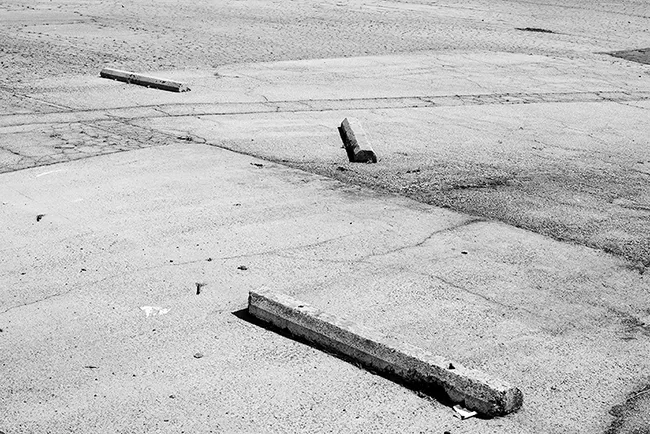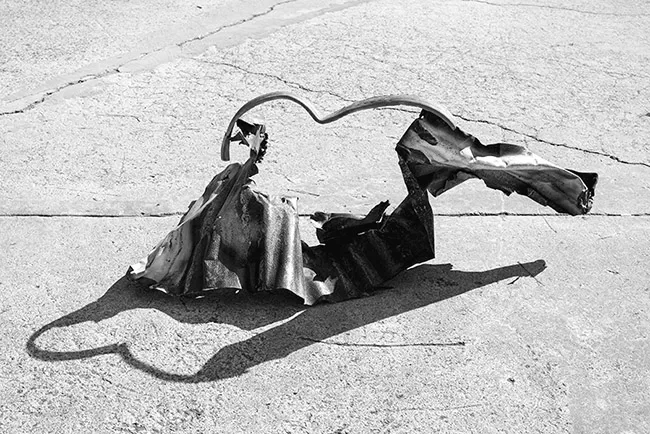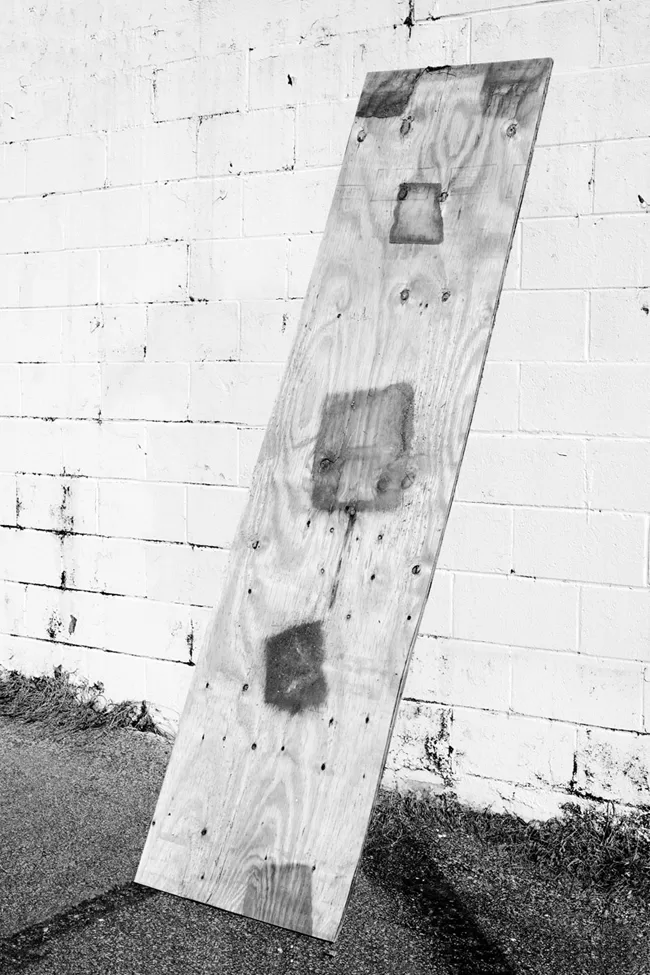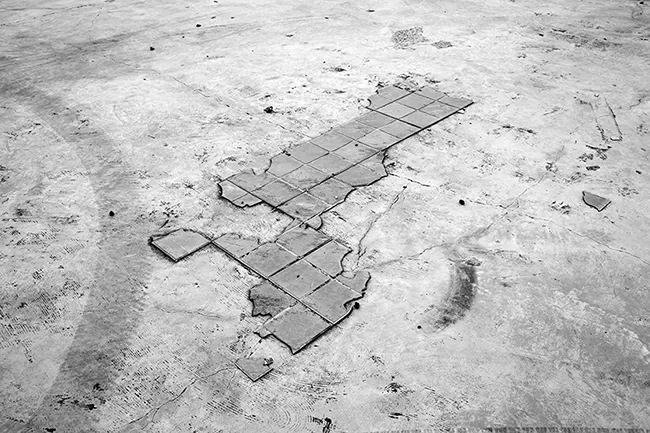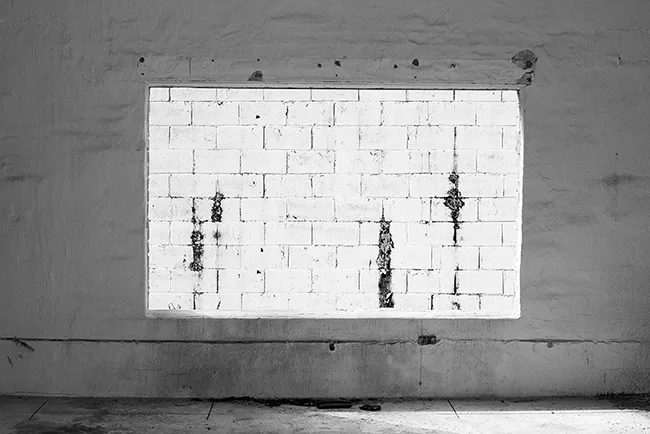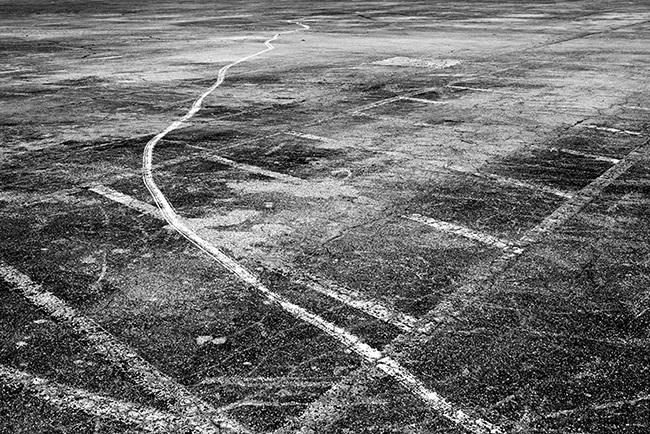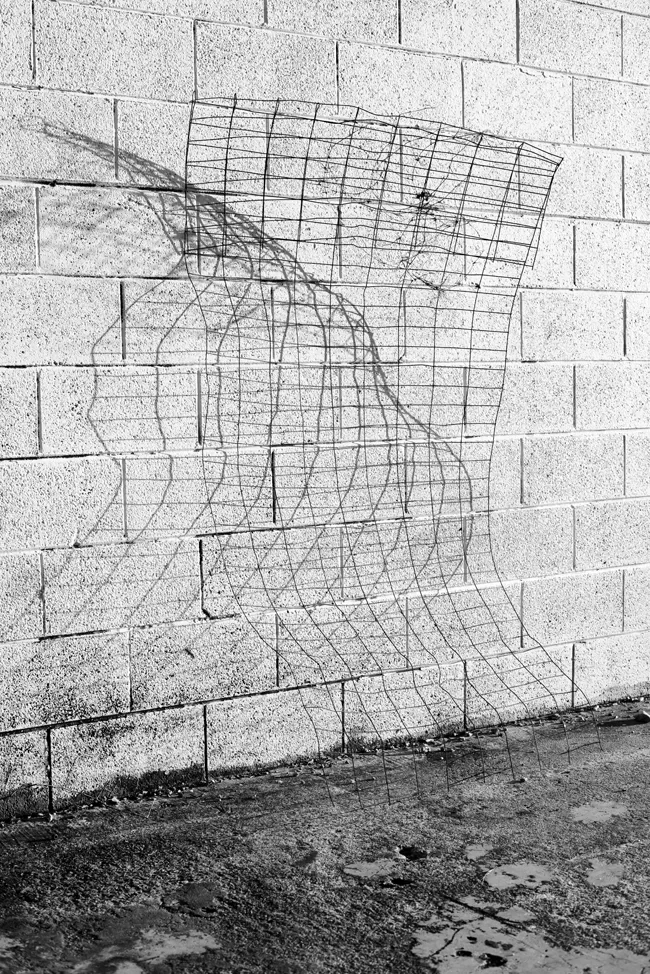Ben Alper – Terrain Vague

In his book The Painter of Modern Life, Baudelaire mentions fragmental aesthetics and how photography shifted the gaze. Fragmental aesthetics − occurring as a result of the invention of photography − created a change of perception allowing a path to impressionism, say, cubism, and so on. Apparently, a new era began with the invention of the camera. Architect Solà-Morales, in his essay Terrain Vague, points out how architecture is influenced by the way the camera captures its surroundings. According to Morales the development of photography is pivotal for the representation of architecture.
Borrowing the title of Solà-Morales’s essay for his ongoing series, photographer Ben Alper searches for inbetween spaces. The protagonist of Alper’s photos is the abandoned temporary space – the terrain vague. Carney and Miller, in the essay Vague Spaces, define terrain vague as ‘the urban buildings and spaces that are mostly outside hegemonic control’. As the opposite of a rationalised city, terrain vagues lead to new and unexpected encounters. It is the unknown other. Present is vigorous as the combination of the past and the future; the notion of time differs in that specificity. According to Morales, terrain vagues allow possibilities. They are left, forgotten urban spaces, containing traces, emanating an uncanny, uncertain feeling. Think about a used sketch paper that one uses to write notes on rather than throwing it away. The ‘emptiness’ of that page allows interruptions and new layers of information to (re)occur.
One may not say Alper limns the past in the series, furthermore, there is absence, void. The artist takes the existing vague space and, through his camera, he documents, adds another meaning to its indeterminacy. Alper’s approach reminds one of an archeologist: going to the site and (re)discovering. Digging the already exposed, interrogating how and when it ended up there… The framing of the artist creates a new territory out of an expanse of a desert. The insecure, immeasurable, and nonfunctional turn into certain geometries in Alper’s photos. The artist creates a composition by personifying the waste. The waste is transformed into a monument; consequently, shadow is a crucial element in the series. The object and the shadow create a body − reminiscent of the German notion Doppelgaenger. The shadow of the leftover metal stick placed on the stairs, or wires on the floor, appear as a sculpture in his work. The process continues.
Someone has just passed. We have no idea when. That spot was alive. Concurrently, another meaning is constituted just because I/you/he/she/it/we/you/they stumbled past. The moment the object is thrown on the street, it gains another significance − containing hidden meanings. There is a tendency of power politics to (re)/(de)construct and rationalise the vague space because of being afraid of its precariousness. However ‘the uncanny empty’ is the new black. Ben Alper knows how to benefit from that. He frames the frame; refines/reshapes the pre-existing terrain vague.
